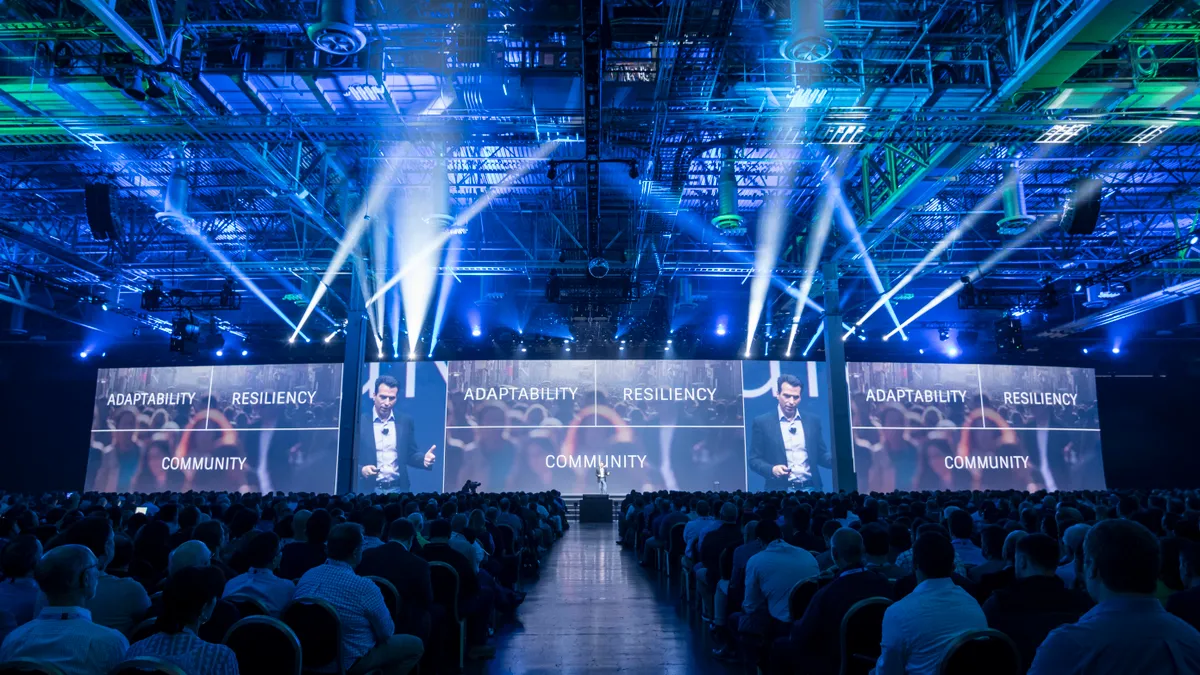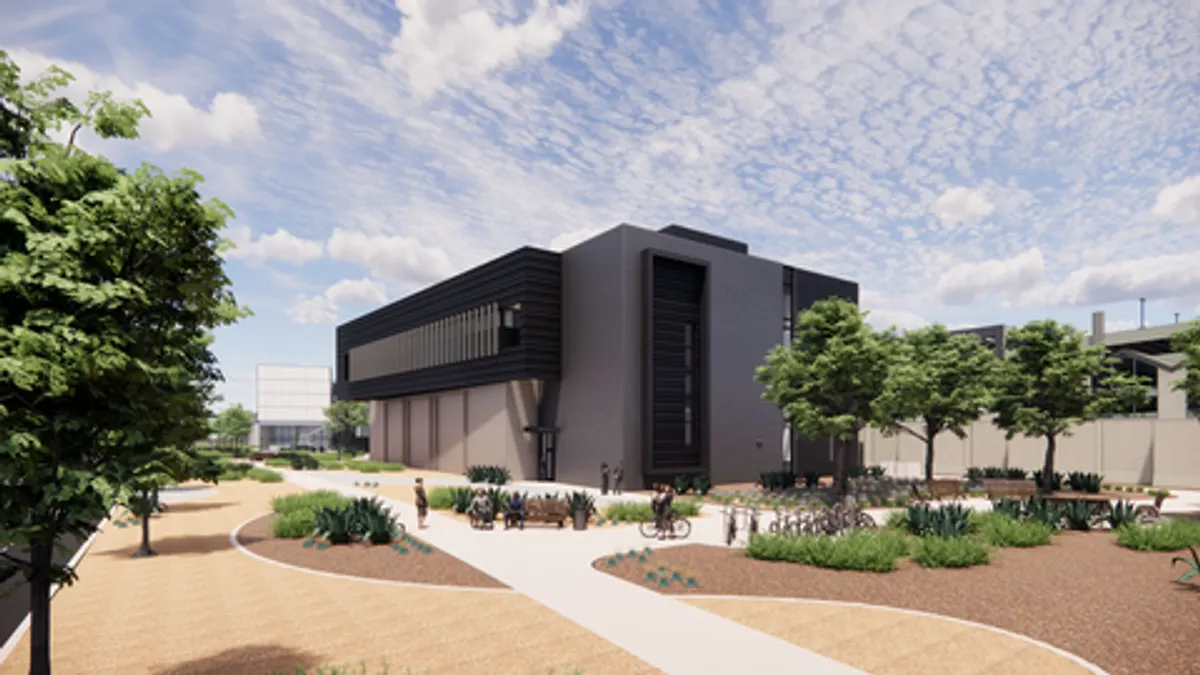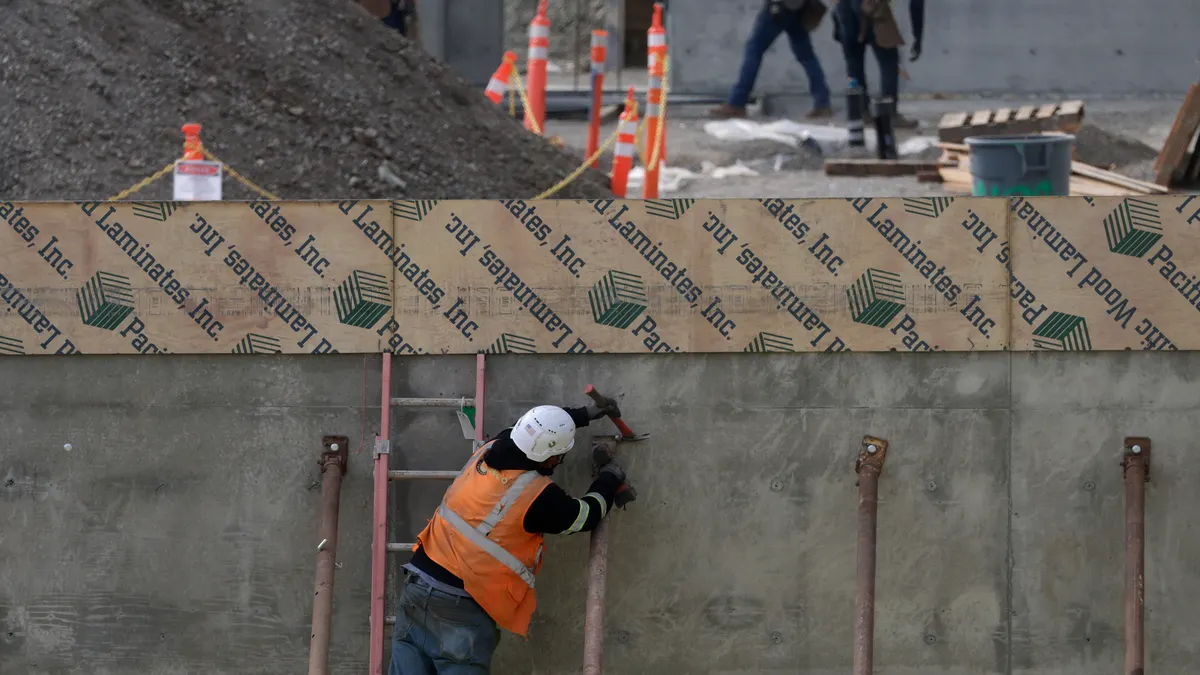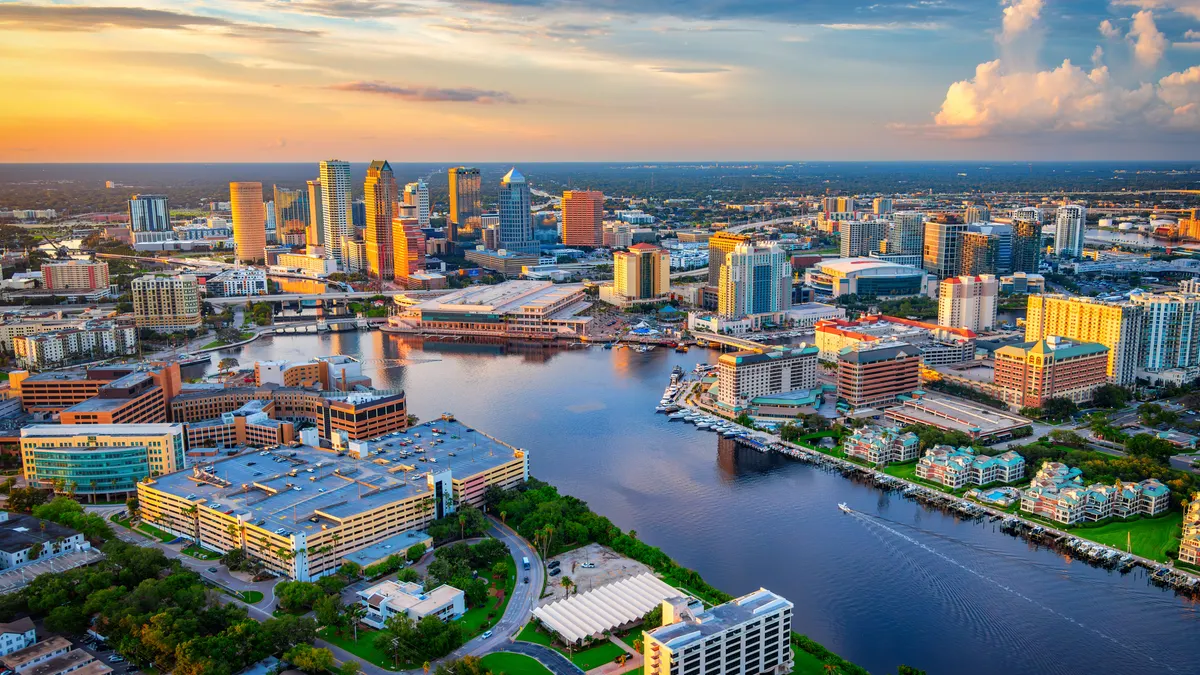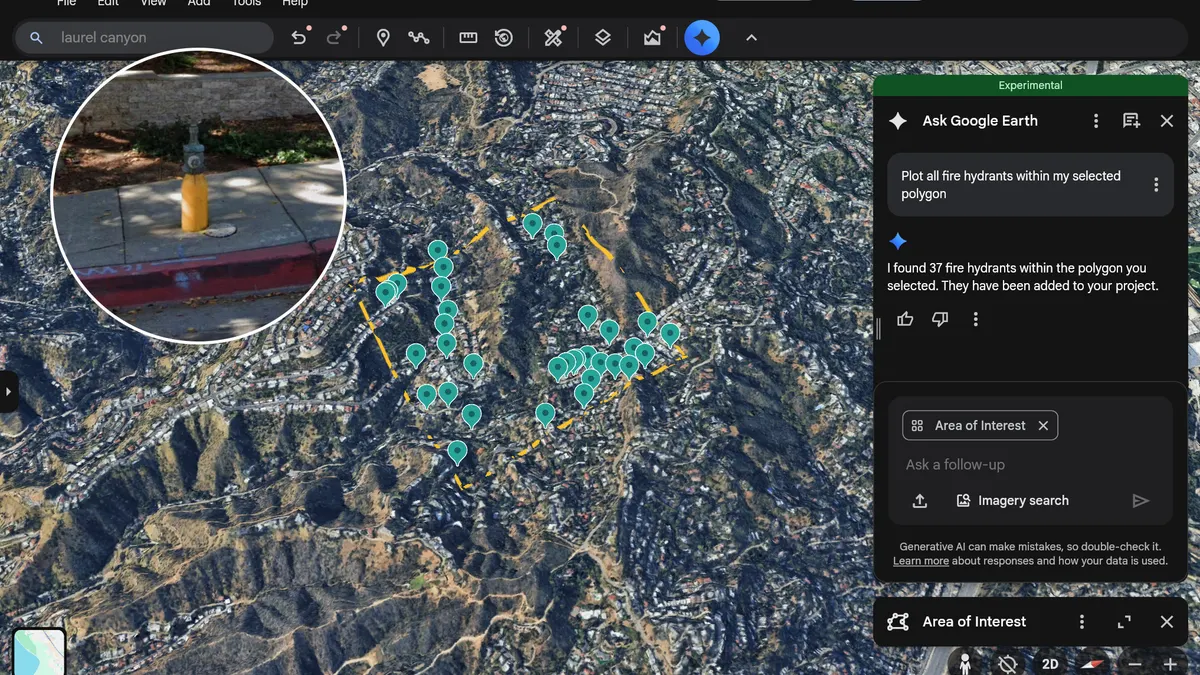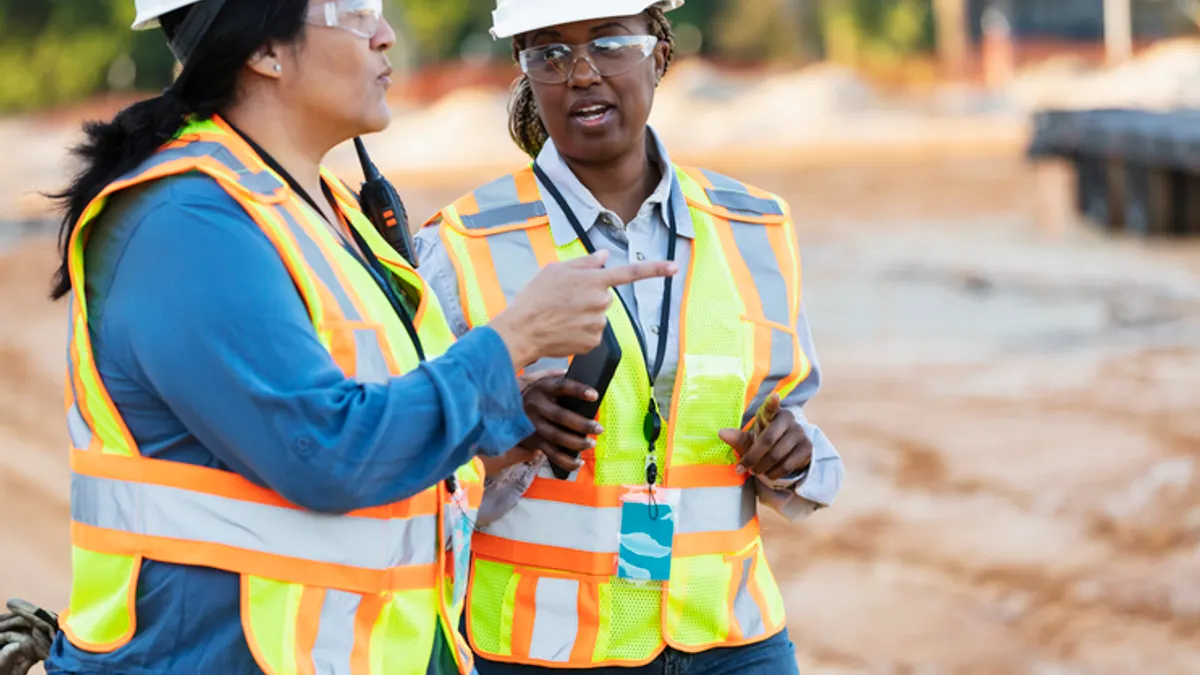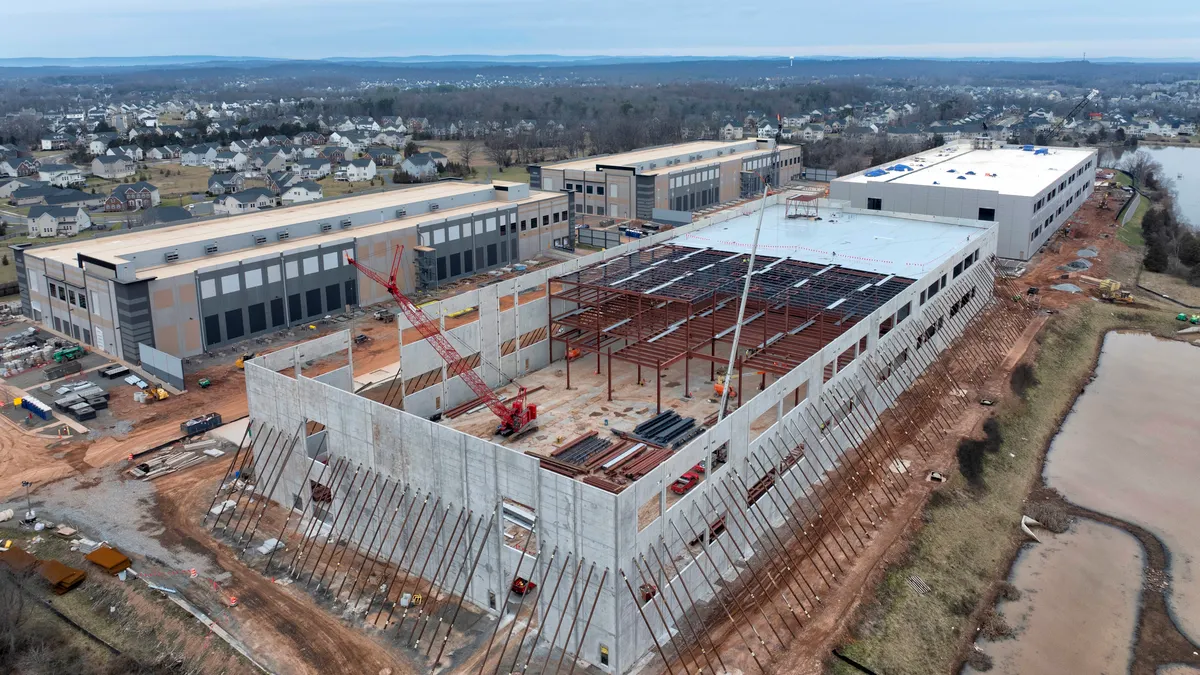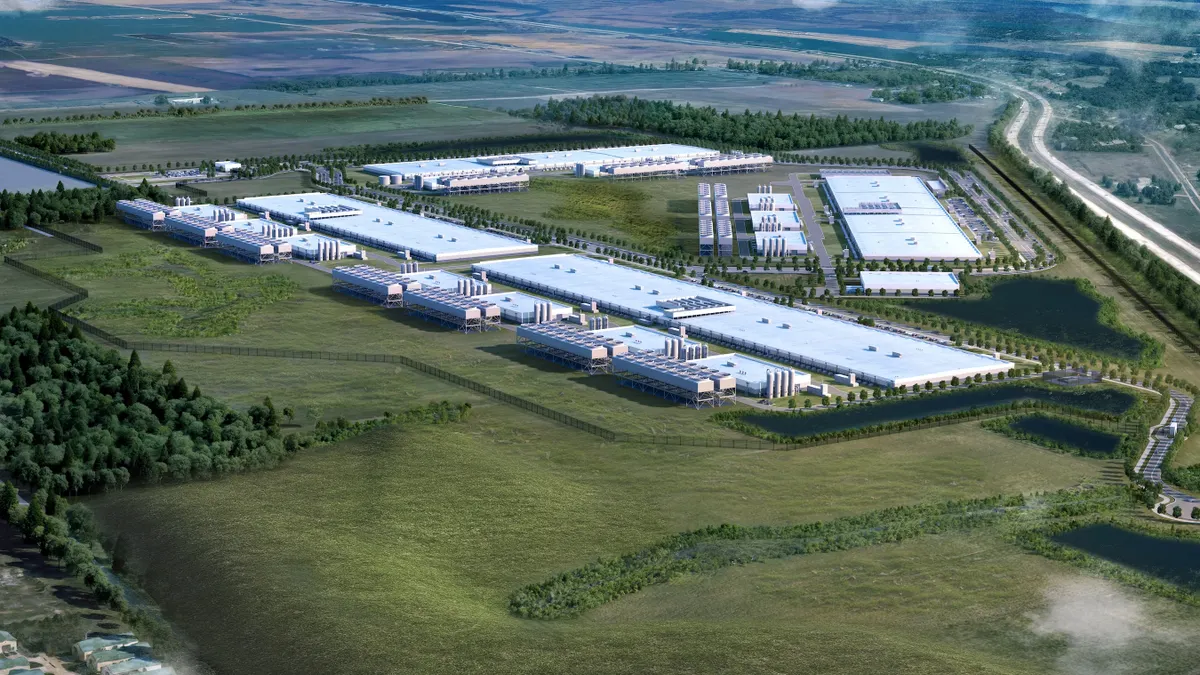The tech takeover is finally beginning to reach the construction industry. Though construction's resistance to such change has been well-documented, a new proliferation of cloud-based workflow apps, wearable sensors and virtual modeling technology is giving companies a new reason to reconsider digitizing parts of their traditional tool belts.
More than 10,000 people traveled to Las Vegas last week for Autodesk University. This year's event, dubbed "The Future of Making Things," catered to the architecture, design, construction and manufacturing communities. Four days of classes, workshops, presentations and interactive experiences explored what’s next in the rapidly evolving AEC technology and how it will affect the world we work in.
Between the show floor and the robust programming, there's simply too much information for any one individual to take in. Here are the five biggest takeaways from Construction Dive's time at AU.
1) Don't discount what you can learn from international projects.
Autodesk's huge international presence brought speakers from Australia, Mexico, Germany, France, Turkey and more to Las Vegas to share how BIM is reshaping the way they complete their projects. The first place winners in each of the AEC Excellence Award categories — infrastructure, building, construction and sustainability — were international projects. BIM and other emerging technologies changed the way these companies designed their projects.
A finalist in the Infrastructure category, Istanbul is in the midst of building a nearly 250-million-square-foot airport that will be able to accommodate 200 million passengers per year. Planned to be completed in four phases, the project's first stage could be done in 2018.
For the winner of that category, the Mexico City Airport team, completing the $4 billion terminal project — or any project of that scale — means getting started with BIM from day one. Such work also necessitates defining each element of the project, choosing tools correctly, and fostering, educating, tuning and seeking endorsement for a common understanding about BIM methodology in the ecosystem and its implementation.
2) Build smarter.
In construction, reality data capture is on the rise as companies look to increase their efficiency and reduce the need for rework on the jobsite. This data, taken from technologies such as LiDAR, photogrammetry, and data sensing and visualization, can verify field installs, check floor flatness and levelness, maintain quality control and assist with camber analysis, site analysis, safety and progress tracking.
Chidambaram Somu, virtual construction manager at DPR Construction, said laser scanning alone can save about 85 cents per square foot on rework caused by field error. For a 100,000-square-foot project, using laser scanning potentially could yield up to $85,000 in savings.
Looking to the future, Somu sees various reality capture sources, including drones, building an ecosystem that consumes information. These analytical tools will aid decision-making in construction, enhance communication among team members and auto-identify issues before they become a problem.
Dustin Hartsuiker, manager of technology solutions at Swinerton Builders, said these metrics and data will help increase productivity. "Bring it in wisely, analyze it and make the correct improvements on your team so you can improve productivity and minimize risk," he said.
3) Watch for innovation in transportation.
Anthony R. Foxx, former Transportation Secretary under President Barack Obama, likens today's infrastructure to a basketball team of superstars like Michael Jordan, Kobe Bryant, Shaquille O'Neal and others — but all at their current ages and health statuses: stars, but aging.
Foxx, who spearheaded the Smart Cities Challenge that Columbus, OH, ultimately won, believes rapid technology adoption doesn't happen because people are comfortable using the tools they know. The current workforce may be comfortable using the tools they know, but contractors are starting to recognize the value of new innovations and are using them independently.
In generations past, the infrastructure focus was on building end-to-end systems. Now, in the U.S. the focus is on integrating existing infrastructure, according to Foxx. "We can't look at modes of transportation as separate and distinct anymore," he said. "It's all one whole."
Foxx says to watch the South when it comes to transportation innovation, using Nashville, TN's ambitious $5.2 billion infrastructure and transit plan as an example. "Time will be a big incentive," he said. "There will be plans to improve quality of life and have predictable travel times."
4) Automation is an opportunity, not a threat.
For the past few years, AU has focused on automation. But with that automation has come questions about the development's effect on a human workforce. Will automation replace the humans that came before it? The short answer, according to Autodesk CEO Andrew Anagnost, is no.
And the explanation is fascinating.
"Our ability to predict the future isn't all that good, but our ability to worry about it is exceptional," Anagnost said. "Instead of worrying about automation taking our jobs, let's have a conversation about where automation can take us."
For Anagnost, Automation didn't ruin the content industry — it created a better one. In years past, only so-called blockbuster content could make the money necessary to gain widespread popularity. Today, platforms like Netflix have enabled companies to produce niche television series that can also excel.
The planet's population growth, Anagnost said, is going to necessitate 1,000 buildings per day throughout the next 33 years to accommodate for that swell. Although he acknowledges that figure is likely impossible to achieve, Anagnost says automation is an opportunity to do more than we could do without it. "Do more buildings and infrastructure better, for less," he said.
When Greenville, SC, added a new BMW plant, it invested significantly in automation. It didn't take jobs away, though. It created an additional 9,000 jobs for the economy and now adds half a billion dollars to the local economy each year. "Automation and jobs growth can co-exist," he said.
Despite these opportunities, automation does present some challenges. But, Anagnost says, those hurdles can be overcome with three traits: adaptability, or evolving and learning new skills; resiliency, or finding the resolve to bounce back when technology starts to disrupt your business; and community, or the idea of everyone working together to achieve more than any one individual can do.
5) Collaboration is key.
Last week Autodesk unveiled its new BIM 360 platform and the associated Connect and Construct Exchange. Although Autodesk offers its own full suite of tools, the company realizes its customers aren't using their software exclusively. As such, Autodesk set out to integrate third-party software providers into its platform to give customers more of what they want.
Construction wearable company Triax Technologies is one such company that has partnered with Autodesk. Its Spot-r IoT-enabled wearable tracking system is integrated with BIM 360 to monitor workers and equipment on the ground. The EquipTag will transit real-time data about worker and equipment activity, location and safety with the goal to reduce jobsite risk.
Anagnost also announced Autodesk’s partnership with GIS mapping company Esri, that will allow customers to synthesize information from BIM and GIS software in an effort to create more connected infrastructure, and another such partnership with drone software platform, 3DR.
According to 3DR CEO and co-founder Chris Anderson, "Our big bet is on BIM." Part of that prediction, he said, is based on the notion that digitizing construction documents and making them available to all project stakeholders with real-time updates is going to be the biggest trend.
"We're betting that this is going to become ubiquitous and standard. For us, that means [our product] goes from something that's a 'nice to have' to a 'must have.'"


